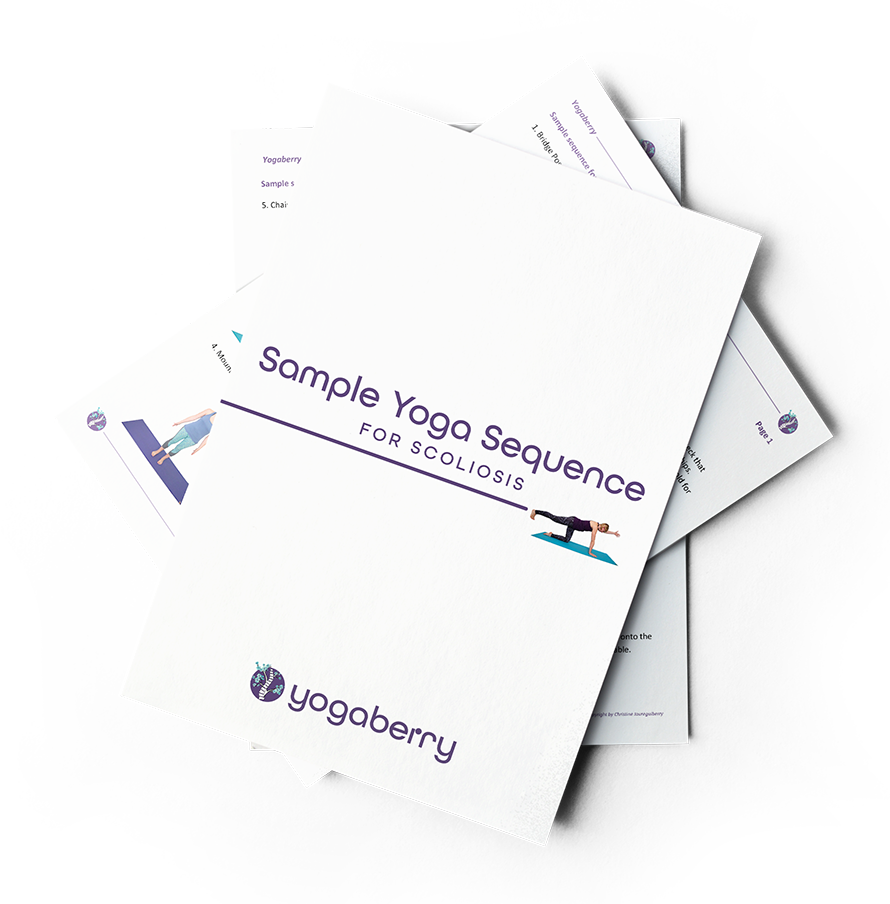As yoga teachers we are expected to know about a wide range of conditions and of course we want our students to feel safe and supported in our classes. So what if a students walks into your class and tells you that they have had metal rods inserted into their back!
First reaction... "oh oh... what do I do now??" Then maybe... "I want to help but I don't know how!" Well, don't worry, I've got your covered!
Sometimes structural scoliosis can progress so much that the person affected will have to undergo spinal fusion surgery and it’s important for you as a teacher to ask if your student with scoliosis has got a fused spine as that will very much affect their yoga practice.
What is Spinal Fusion Surgery?
Adolescent Idiopathic Scoliosis (AIS) which usually develops between the ages of 10-15 years occasionally progresses to a point where it requires surgical intervention. The same can happen with degenerative scoliosis which happens later in life due to bone and disk degeneration but is quite a different type of surgery!
What is important to know is that there will be a piece of metal rod used to fix the spine with the purpose of the bones eventually fusing together as they are not able to move. This can be along a large section of the spine (usually with AIS a section of the thoracic spine but it can even go all the way down to the sacrum!) or maybe just a few vertebrae which is usually the case with degenerative scoliosis.
As yoga teachers we have to approach movement for those that have a spinal fusion differently to those that have scoliosis but no fusion.
Here are some questions you should be asking and things to consider!
1. Ask them when the surgery was done.
They need to have recovered for at least 6 months after the surgery and have had the ok from their surgeon that they are able to do physical exercise! Get this in writing if you can.
2. Ask them which segments of the spine have been fused.
If it’s a long section, for example T2 (upper thoracic vertebra) to L4/5 (lower lumbar vertebra) then they will not have a lot of movement in their spine at all, however, if it’s a smaller section (e.g. only the thoracic or only a couple of lumbar vertebrae) they might have much more movement.
The sections that are fused will not be able to move – the sections that are NOT fused are the most vulnerable so it’s important to keep that in mind!
3. Ask your student how confident they feel about movement in general.
Most people who have had spinal fusion and turn up at a general yoga class know what they need to do and how they need to adjust their practice but some people might not be and rely on your guidance! If they feel confident then offer your support if they need it but let them get on with it - they will know what they can and cannot do. If they are not consider working with them 1:1 before they join a group class.
4. Careful with twisting and bending of the spine!
As we have established a fused spine works differently to a normal spine. While sidebends, backbends and twists can be amazing for people that don’t have spinal fusion they will be difficult if not impossible for someone with a fused spine!
Focus on hip and core strengthening that is done in a neutral spine position and always bending from the hips rather than the waist.
NEVER push or pull them deeper into poses!
Check out my YouTube playlist for spinal fusion with some ideas on adapting your yoga practice.
5. Encourage your student to trust their sensations.
If something doesn’t feel quite right, they should stop that movement. This might go without saying for you but it’s worth talking to your student about this as they might be so focused on trying to do what everyone else is doing.
As a teacher you help a lot of people with lot of different conditions. It is hard to know everything about everything (nobody does…)! It’s ok to say that you are not sure and need to find some more information about it first! This will help to build the trust of the student knowing you will do what you can to keep them safe.
If you want to learn more about teaching students with scoliosis check out this training
About Christine Jaureguiberry
Christine Jaureguiberry is the creator of Yogaberry, an online Yoga for Scoliosis community, and the host of the popular podcast Back Chat, a resource for all things back care and scoliosis.
Living with scoliosis herself, she brings her extensive training and years of experience to empowering classes, workshops and training for students from all over the world.
Christine is passionate about helping people who suffer from back ache, scoliosis and spinal fusion and has supported hundreds of people to learn how to use yogic postures and techniques to feel in control, empowered and live a pain free life.




